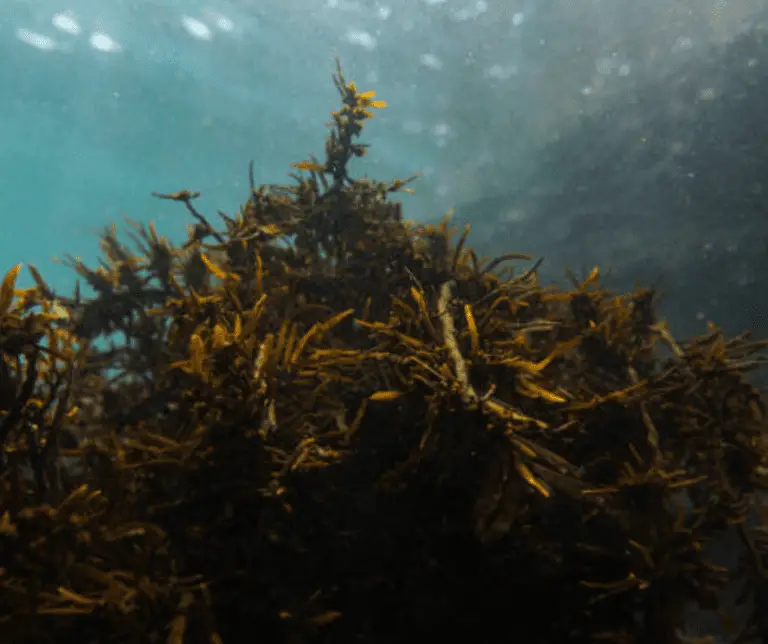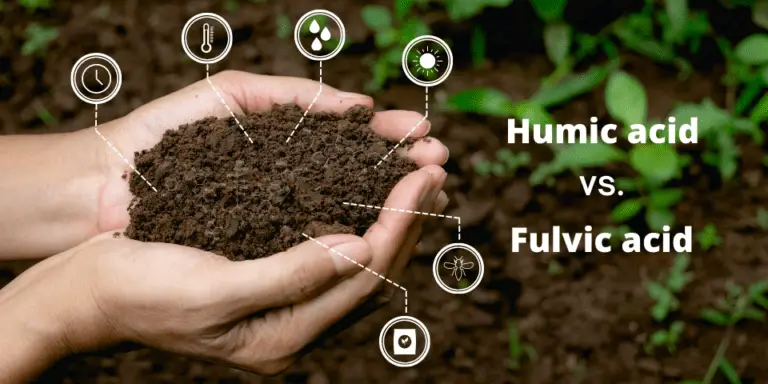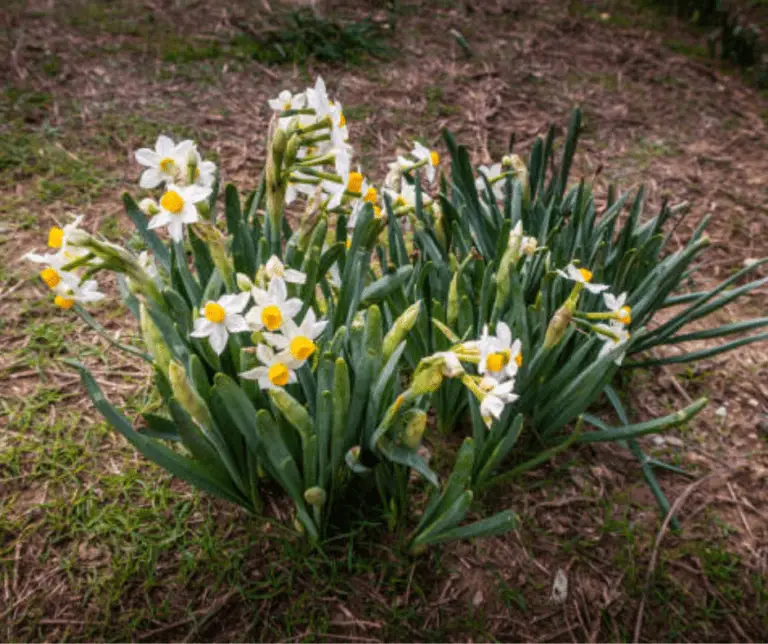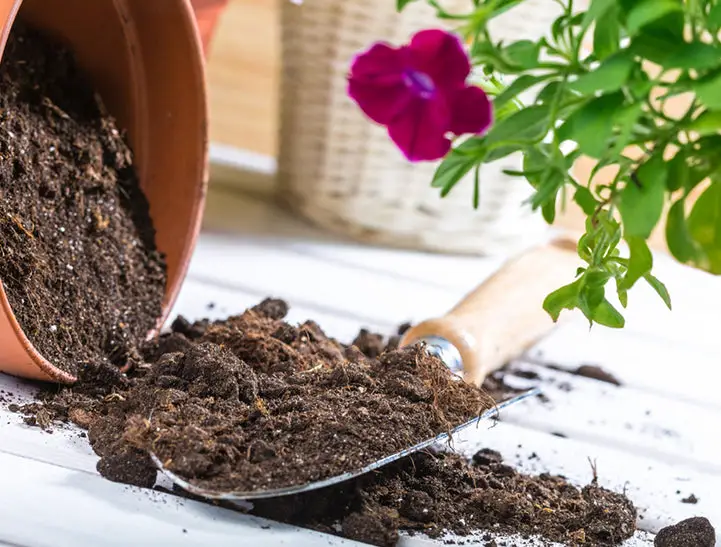Is a Snail an Insect? All About Snails
Table of Contents
The Basics of Snails
Snails are fascinating creatures that belong to the phylum Mollusca. With over 60,000 species of snails found worldwide, they come in various shapes, sizes, and colors. These gastropods are known for their spiral shells that provide protection and a unique home on their backs.
One of the defining features of snails is their muscular foot, which they use for locomotion. This foot secretes mucus that helps them glide smoothly over surfaces, leaving a characteristic trail behind them. Snails also possess a radula, a rough tongue-like organ used for scraping food such as algae, plants, and even decaying matter.

Physical Characteristics of Snails
Snails exhibit a wide range of physical characteristics that make them intriguing creatures in the animal kingdom. One of the most distinctive features of snails is their spiral-shaped shell, which serves as a protective home and provides structural support for their soft bodies. These shells come in various sizes, shapes, and colors, contributing to the diversity seen in different snail species.
In addition to their shells, snails are equipped with a muscular foot that they use for movement. This foot secretes mucus, allowing snails to glide smoothly over surfaces as they explore their environment. Their sensory organs, including tentacles with eyes at the tips, help them navigate and locate food. The presence of these unique physical features showcases the fascinating adaptability of snails in diverse ecosystems.
Here are the physical characteristics of snails:
| Characteristic | Description |
| Body Structure | Most snails have a soft, tube-shaped body. |
| They possess a muscular foot that aids in locomotion. | |
| Snails typically have one or more pairs of tentacles on their head. | |
| Shell | Snails have a spiral-shaped shell made of calcium carbonate. The shell provides protection. |
| The shell can vary in color, shape, and size depending on the species. | |
| Eyes | Snails have simple eyes located at the tips of their tentacles. These eyes detect light and motion. |
| Respiration | Snails breathe through a pulmonary cavity or a gill. Some species can also respire through their skin. |
| Reproduction | Snails are hermaphrodites, meaning they have both male and female reproductive organs. |
| They lay eggs in moist environments. | |
| Diet | Snails are herbivorous, feeding on plants, algae, and decaying organic matter. |
| Habitat | Snails inhabit a variety of environments, including land, freshwater, and marine ecosystems. |
Remember that snails exhibit diverse characteristics based on their species and habitat!
Habitat and Diet of Snails
Snails, known for their slow and steady pace, can be found in a variety of habitats around the world, ranging from gardens and forests to deserts and oceans. These fascinating creatures are versatile in their diet, feeding on a wide array of vegetation such as leaves, fruits, and even algae. Their feeding habits play a crucial role in maintaining ecological balance in their respective environments.
Adapted to survive in diverse climates, snails are efficient at utilizing their surroundings for sustenance. Their diet often consists of calcium-rich sources like shells and stones, essential for their shell growth and overall health. Understanding the habitat and dietary preferences of snails is key to appreciating their importance in the ecosystem and the delicate balance they help maintain.
The table below shows the habitat and diet of snails:
| Characteristic | Description |
| Habitat | Snails inhabit a variety of environments: |
| Land: They live on or near the ground, often in damp or moist conditions. | |
| Freshwater: Some snails thrive in freshwater ecosystems like lakes and rivers. | |
| Saltwater: Certain species are adapted to marine environments. | |
| Arboreal: A few snails, like the Liguus found in Florida and Cuba, live in trees. | |
| Diet | Snails display diverse eating habits based on their species and individual needs: |
| Herbivores: Most terrestrial snails are herbivorous, consuming live plant parts, fungi, and fruits. | |
| Detritivores: Some feed on dead organic matter and debris found in soil. | |
| Carnivores: Certain snail species, like Powelliphanta in New Zealand, eat other gastropods and even earthworms. | |
| Omnivores: These snails can include both plants and animals in their diet. | |
| Calcium Requirement: Snails need foods rich in calcium to maintain their hard shells. | |
| Nocturnal Feeders: They actively search for food during the night or early morning hours. |
Reproduction and Life Cycle of Snails
Snails, like many other gastropods, have fascinating reproductive strategies and life cycles. These creatures are hermaphrodites, possessing both male and female reproductive organs. During the mating process, snails may engage in elaborate courtship rituals before exchanging sperm to fertilize each other’s eggs. Some species lay eggs in the soil, while others produce egg capsules in moist environments. The eggs undergo development, hatching into tiny versions of the adult snails.
As the young snails grow, they go through various stages of development, shedding their shells as they increase in size. Snails exhibit remarkable resilience and adaptability in their life cycles, with some species able to survive in a wide range of environments. The life cycle of a snail is a testament to their ability to thrive in diverse habitats and adapt to changing conditions.
Different Types of Snails
Snails are fascinating creatures that come in various types and species, each with unique characteristics and adaptations. One common type is the garden snail (Cornu aspersum), known for its brownish shell and wide distribution across gardens and crops. Another interesting type is the giant African land snail (Achatina fulica), which can grow up to 8 inches in length and is considered an invasive species in many regions.
On the other hand, the cone snail (Conus spp.) is a marine snail with a beautiful shell that is highly venomous, using its toxins to hunt prey underwater. Each type of snail plays a crucial role in its ecosystem, showcasing the diversity and importance of these small but significant creatures in the natural world.
Below is a table showing the different types of snails along with their sizes, habitats, diets, and characteristics:
| Type of Snail | Size | Habitat | Diet | Characteristics |
| Giant African Land Snail | Around 2.75 inches tall (6.9 cm) | Indigenous to Africa but now found on all continents except Antarctica. | Herbivorous, consuming plants, fruits, greens, and even paper products. | Known for causing extensive harm to agricultural plants and crops. |
| Mediterranean Green Snail | Varies; typically small | Native to the Mediterranean region and parts of Europe. | Herbivorous, feeding on algae, plants, and decaying organic matter. | Has a greenish shell and is commonly found in coastal areas. |
| Roman Snail (Helix pomatia) | Shell diameter up to 2 inches (5 cm) | Native to Europe, including France, Italy, and Germany. | Herbivorous, consuming leaves, flowers, and fruits. | Recognizable by its large, coiled shell with brown and yellow bands. |
| Japanese Land Snail (Euhadra) | Varies; small to medium-sized | Found in Japan and other parts of Asia. | Herbivorous, grazing on moss, algae, and plant material. | Often brightly colored and has a conical or spiral-shaped shell. |
| Apple Snail (Pomacea canaliculata) | Shell diameter up to 4 inches (10 cm) | Native to South America but now invasive in many regions. | Herbivorous, consuming aquatic plants, algae, and detritus. | Named for its apple-like appearance and ability to breathe air using a snorkel-like siphon. |
| Cone Snail (Conus spp.) | Varies; typically small to medium-sized | Found in tropical marine habitats worldwide. | Carnivorous, preying on fish, worms, and other mollusks. | Possesses a beautifully patterned, cone-shaped shell and venomous harpoon-like radula for hunting. |
| Zebra Nerite Snail (Neritina natalensis) | Shell length around 1 inch (2.5 cm) | Native to Africa and commonly kept in freshwater aquariums. | Algae eater, grazing on surfaces and keeping tanks clean. | Recognizable by its black and yellow striped shell and preference for hard surfaces. |
| Ramshorn Snail (Planorbidae) | Varies; small to medium-sized | Found in freshwater environments globally. | Detritivorous, feeding on decaying matter, algae, and biofilm. | Has a flat, disc-shaped shell resembling a ram’s horn. |
The Importance of Snails in Ecosystem
Snails play a crucial role in the ecosystem by contributing to nutrient cycling and decomposition. As decomposers, they help break down organic matter, such as dead plants and leaves, into smaller particles, aiding in the release of essential nutrients back into the soil. This process enriches the soil, promoting plant growth and overall ecosystem health.
Furthermore, snails also serve as a food source for various animals, including birds, amphibians, and predatory insects. Their presence in the food web helps maintain biodiversity and balance within ecosystems. By participating in both decomposition and as a food source, snails fulfill significant ecological functions that support the overall health and stability of natural environments.

Predators of Snails
Snails, despite their slow and seemingly vulnerable nature, have a number of predators that play a crucial role in the ecosystem’s balance. These predators include birds, amphibians, reptiles, and even some mammals like hedgehogs and mice. The predatory behavior of these animals towards snails helps regulate snail populations and prevents them from overwhelming their habitats.

Additionally, some invertebrates such as beetles, flies, and centipedes also feed on snails, contributing to the natural checks and balances within the ecosystem. These predators have adaptations that allow them to capture and consume snails efficiently, playing a part in the complex web of interactions that sustains biodiversity in various ecosystems.

Common Misconceptions about Snails
Misconceptions about snails are common among people, often leading to misunderstandings about these fascinating creatures. One prevalent misconception is that all snails are harmful to plants and gardens. While it’s true that some snail species can be pests, not all snails feed on vegetation. In fact, some snails are detritivores, feeding on decaying matter, not living plants.
Another misconception is that all snails move at a slow pace. While some snail species are indeed known for their leisurely movements, others can be surprisingly fast. The speed at which a snail moves depends on factors such as species, size, and environmental conditions. It’s essential to recognize that snails exhibit a diverse range of behaviors and characteristics beyond what is commonly assumed.
Here are some common misconceptions about snails:
| Misconception | Reality |
| 1. Snails are always slow. | While snails move at a leisurely pace, some species can be surprisingly fast, especially when conditions are favorable. Their speed varies based on factors like temperature and moisture. |
| 2. All snails are harmful to gardens. | Not all snails are pests. Some play essential roles in ecosystems by breaking down organic matter and serving as food for other animals. However, certain invasive species can harm crops. |
| 3. Snails are slimy and dirty. | Snails do produce mucus, which helps them glide along surfaces. However, this mucus serves as protection and prevents dehydration. It’s not necessarily “dirty.” |
| 4. Snails are insects. | Snails belong to the class Gastropoda, which is distinct from insects (class Insecta). They are mollusks, characterized by their soft bodies and spiral shells. |
| 5. All snails have the same shell shape and color. | Snails exhibit incredible shell diversity. Their shells can vary in shape, color, and pattern, reflecting their species and habitat. |
| 6. Snails are harmful to humans. | Most snails are harmless to humans. However, some tropical species carry parasites or transmit diseases. Proper hygiene and cooking ensure safety. |
| 7. Snails are nocturnal creatures only. | While many snails are active at night, some are diurnal (active during the day). Their activity patterns depend on factors like temperature and predation risk. |
| 8. Snails can regenerate lost body parts. | Unlike certain animals (like starfish), snails cannot regenerate lost body parts. However, they can repair minor damage to their shells over time. |
| 9. Snails are solitary creatures. | Snails can be social! Some species aggregate in groups, especially during mating or hibernation. Others prefer solitude. |
| 10. All snails live in shells. | While most snails have shells, some groups (such as slugs) lack them. Slugs are essentially shell-less snails. |
Unique Adaptations of Snails
One of the most intriguing aspects of snails is their unique adaptations that have allowed them to thrive in various environments. For instance, some species of snails have the remarkable ability to hibernate during harsh weather conditions, sealing themselves inside their shells to conserve energy and survive until more favorable conditions return. This adaptation helps them withstand extreme temperatures and lack of food, showcasing their resilience and ability to adapt to challenging situations in nature.
Another fascinating adaptation of snails is their slime production, which serves multiple purposes. The mucus secreted by snails helps them glide smoothly over rough surfaces, protecting their delicate bodies from abrasions. Additionally, this slime acts as a defense mechanism, deterring predators by making them unpalatable or difficult to grasp. The unique properties of snail slime have even led to its use in skincare products for its moisturizing and anti-inflammatory properties, highlighting the beneficial aspects of this seemingly humble creature’s adaptation.
How Snails Move
Snails, known for their slow and steady pace, move in a fascinating way that sets them apart from other creatures. Their method of locomotion involves a unique combination of muscle contractions and mucus secretion. As a snail slides along a surface, it creates a layer of mucus that reduces friction, allowing it to glide effortlessly. This mucus also serves as a protective barrier, preventing the snail’s soft body from getting damaged by rough surfaces.
Additionally, snails utilize a specialized muscle known as the ‘foot’ to propel themselves forward. By contracting and relaxing this muscular organ in a rhythmic fashion, snails can move in a wave-like motion, enabling them to explore their surroundings in search of food, shelter, or a suitable mate. This slow but steady movement not only helps snails navigate their environment but also contributes to their distinctive charm and appeal.
Snails as Pests
Snails can be a nuisance in gardens and agricultural settings, where they are often considered pests. These slow-moving creatures have a voracious appetite for a variety of plants, including fruits, vegetables, and ornamental flowers. Their feeding habits can lead to significant damage to crops, making them a concern for farmers and gardeners alike.
One of the main challenges with managing snails as pests is their ability to reproduce quickly and thrive in various environments. Their slimy trails can be unsightly and cause harm to plants, leading to economic losses for growers. Implementing effective control measures, such as physical barriers, natural predators, and targeted baits, can help minimize the impact of snails on crops and gardens.

Snails in Art and Culture
Snails have been featured in various forms of art and cultural expressions throughout history. In visual art, especially in ancient Greek and Roman mythology, snails were often associated with deities like Aphrodite and represented attributes such as fertility and intuition. Artists like Salvador Dali incorporated snail motifs in their surrealist works, adding a dreamlike quality to their creations. In literature, snails have been used as symbols of patience and perseverance, appearing in fables and allegorical stories to convey moral lessons.
Furthermore, snails have inspired unique cultural practices, such as snail racing competitions that are popular in countries like England and France. These events, though lighthearted in nature, showcase the playful fascination humans have with these slow-moving creatures. In Japanese culture, snails are sometimes depicted as auspicious symbols, believed to bring good luck and prosperity. This complex relationship between snails and human creativity sheds light on the enduring impact of these seemingly humble creatures in the realms of art and culture.

Conservation Efforts for Snails
Conservation efforts for snails are crucial in maintaining the delicate balance of ecosystems. Due to factors such as habitat destruction, pollution, and climate change, many snail species are facing endangerment and even extinction. Organizations and researchers worldwide are working tirelessly to protect these often-overlooked creatures.
One key strategy in snail conservation is habitat restoration and protection. By preserving the natural environments where snails live, we can ensure their continued survival. Additionally, education and awareness campaigns are essential in promoting the importance of snails in ecosystems, highlighting their role in biodiversity and the interconnectedness of all living organisms.
Interesting Facts about Snails
Did you know that snails are one of the slowest creatures on Earth? With their top speed averaging at only 0.013 m/s, their leisurely pace is due to their unique spiral-shaped shell design that provides protection but also adds weight, making them move at a sluggish pace. Despite their slow speed, snails have the remarkable ability to navigate using their sense of smell, leaving a trail of mucus behind them as they move.
Another fascinating fact about snails is their ability to hibernate when conditions are unfavorable. In colder climates, snails retract into their shells and secrete a layer of mucus to seal off the opening, effectively entering a state of dormancy until the environment becomes more suitable for their activity. This adaptation allows snails to survive harsh weather conditions and prolonged periods of food scarcity, showcasing their remarkable resilience in the face of challenges.
Myths and Superstitions about Snails
Snails have long been the subject of myths and superstitions across various cultures. In some regions, it is believed that carrying a live snail in your pocket can bring good luck and prosperity, while in others, they are seen as omens of bad luck. These fascinating creatures have captured the imagination of people for centuries, leading to a variety of folklore and superstitions surrounding them.
One common myth about snails is that they can transmit diseases to humans. While it is true that certain types of snails can carry parasites that may be harmful to humans, the chances of contracting a disease from a snail are extremely low. In fact, snails are more likely to be beneficial in gardens by helping to break down organic matter and improve soil health. Mythology and superstitions aside, understanding the true nature of snails can help dispel any unfounded fears about these gentle creatures.
Keeping Snails as Pets
Keeping snails as pets can be a unique and relaxing experience for those interested in these fascinating creatures. Snails are low-maintenance pets that require a suitable environment with enough humidity and a diet rich in calcium to keep their shells strong and healthy. Providing them with a variety of foods such as fruits, vegetables, and leafy greens can help ensure their well-being and longevity in captivity.
Many people enjoy observing the slow and methodical movements of snails, making them a popular choice for those looking for a calming and easy-to-care-for pet. Snails come in various species, each with its own distinct characteristics and behaviors, making them an intriguing addition to any home or garden setup. With proper care and attention, snails can thrive in captivity and provide endless fascination for their owners.
To Know More About Snails, Watch This Video.
Can snails make good pets?
Yes, snails can make great pets for those who are interested in observing their unique behaviors and caring for them properly.
What do snails eat?
Snails typically eat a diet of fruits, vegetables, leafy greens, and calcium-rich foods like eggshells or cuttlebone.
How do snails reproduce?
Snails are hermaphrodites, meaning they have both male and female reproductive organs. They mate by exchanging sperm with each other, and then lay eggs that hatch into baby snails.
Are all snails the same?
No, there are many different species of snails with varying physical characteristics, habits, and habitats.
Do snails play a role in the ecosystem?
Yes, snails play an important role in the ecosystem by helping to break down organic matter and recycling nutrients.
Can snails be harmful to plants?
Some species of snails can be considered pests in gardens, as they may feed on plants and damage crops.
Are there any interesting facts about snails?
Yes, snails are known for their slow movement, their ability to retract into their shells for protection, and their slime that helps them glide along surfaces.
What are some myths or superstitions about snails?
In some cultures, snails are believed to bring good luck, while in others they are seen as symbols of laziness or slowness.
How can I keep snails as pets?
To keep snails as pets, you will need a suitable habitat with proper humidity and temperature levels, a varied diet, and a clean environment to thrive.







